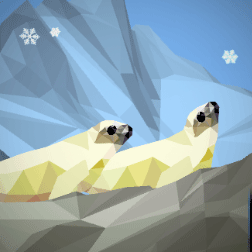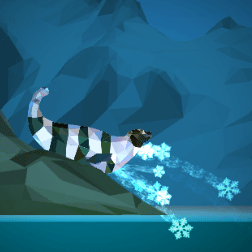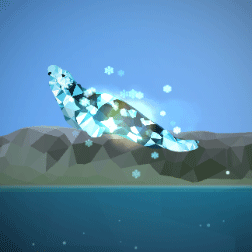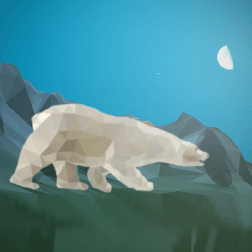Characters
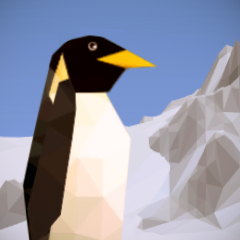
Ronne
Ronne the penguin is an Emperor penguin - the first penguin you get when you play the Ronne Ice Shelf world. The Ronne Ice Shelf was named for American Edith Ronne, one of the first women to stay in Antarctica over the winter. It is also named for her husband, Finn Ronne, a Norwegian explorer and scientist. His father, Martin Ronne, was also a polar explorer and was part of Roald Amundsen's successful expedition to the South Pole.
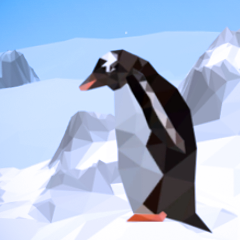
Filchner
Filchner the penguin is a Gentoo penguin, the Filchner Ice Shelf was named for German Wilhelm Filchner, Leader of the 1912 German Antarctic Expedition which discovered the Filchner Ice Shelf.
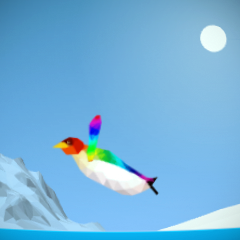
Sanae
Sanae the penguin is a rainbow-penguin, named after the South African National Antarctic Expedition (SANAE) - the first South African National Antarctic Expedition departed early in December 1959, and their bases are named after this expedition.
More information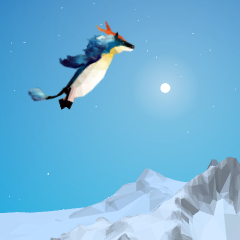
Fuji
Fuji the penguin is a Japanese unicorn-penguin, named Fuji after one of the Japanese Antarctic stations - Dome Fuji station.
More information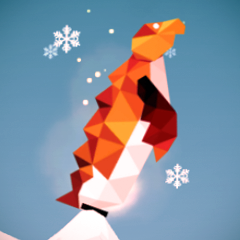
Vernadsky
Vernadsky the penguin is a Ukrainian firebird-penguin, named Vernadsky after the Ukrainian Antarctic station located on the Antarctic Peninsula. The firebird penguin is a mythical glowing, flaming bird.
More information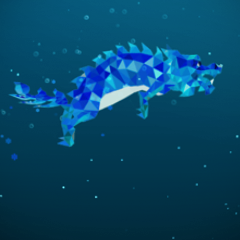
Xue Long
Xue Long the penguin is a Chinese snow-dragon-penguin, named Xue Long (Snow dragon) after the Chinese icebreaker ship. The snow-dragon penguin is a mythical fire-breathing creature.
More information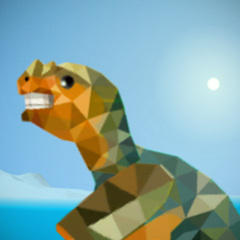
Chilly
Chilly the penguin is a titano-penguin - named Chilly in honour of the Chilean Antarctic Program. The titano penguin is the biggest dinosaur penguin ever found, a number have been found across Patagonia.
More information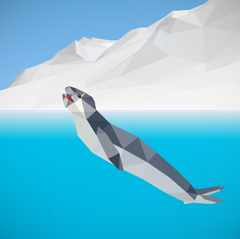
Erebus
Erebus the leopard seal is named after one of the ships, HMS Erebus, used in the expedition of James Clark Ross to Antarctica in 1839-1843. In Greek mythology, Erebus is a deity - the god of darkness - so best to steer clear of him! The other ship was called HMS Terror - can you find the character "Terror" in the game....?
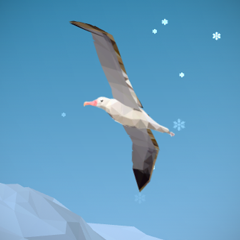
Alba
Alba the Albatross is named after a little girl who had a tough start in life, and who has a name very suitable for an Albatross!
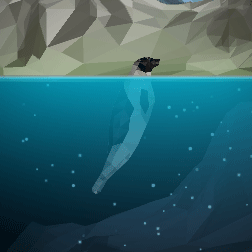
Nuuk
Nuuk the seal is a Harp seal, named for the capital city, Nuuk, in the South West of Greenland.
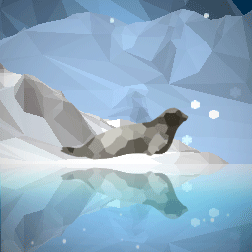
Nord
Nord the seal is a Ringed seal, named for Station Nord, a research station in the North of Greenland.
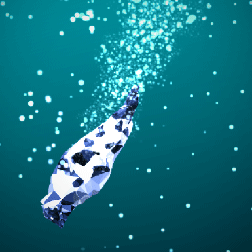
Persoq
Persoq the seal is named using the Kalaallisut (Greenlandic) word for "drifting snow" or "blowing snow"
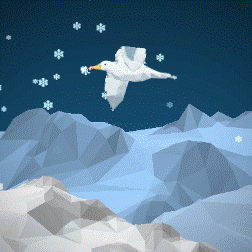
Naajarujussuaq
Naajarujussuaq is named using the Kalaallisut (Greenlandic) word for Glaucous Gull, a gull which breeds in Greenland, but can also be found further south in the winter.
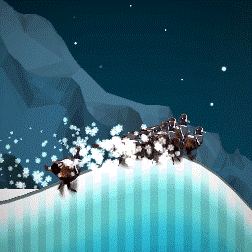
Toornaviarsuk
Toornaviarsuk is named using the Kalaallisut (Greenlandic) word for Harlequin Duck, a duck which breeds in Greenland. The Harlequin duck is a good underwater swimmer!
Science
Ice Flows is based on science - but some elements are fiction in order to make the game fun to play. Here we separate the science from the fiction and give you some hints for answering some of the quiz questions in the game.

Science
The game is called Ice Flows - because it does! Ice behaves like a fluid and flows due to gravity, much like a blob of treacle does, though a bit slower… Snow falls on the top of the ice sheet, and ice is lost at the edges and underneath through iceberg calving & melting.
If the inputs and outputs are equal, the ice sheet finds a balance – a “happy place” (or more scientifically, an equilibrium state), where the ice flows at a rate to balance these inputs and outputs.
The game is based on a simple ice sheet model which represents the way in which ice flows, and how that flow is altered by changes in the surrounding environment. Computer-based ice sheet simulation models are used by scientists to both understand how the ice behaves and to make projections for future behaviour.
Fiction
Ice flows slowly, from a few metres per year, to several metres per day. In the game, time and space are modified to make the game playable.
The game would take a very long time to play if we didn’t speed up time, the game time for one level represents thousands of years, though changes in ice sheets over decades can cause a significant contribution to sea level change.
If the height and length of the ice sheet were representative of the real ice sheet, you would need to line up a few hundred phones in order to see the whole ice sheet. Hence, the ice sheet has been stretched in height in comparison to its length. Each profile represents about 1500 kilometres in length, and about 4000 metres in height.
Ice flow
Ice sheet models are very complex mathematical representations of ice flow, and are too complex to be programmed into a game people can play on a mobile phone. We have simplified the representation of ice flow to produce something that replicates the overall behaviour, but runs quickly on a phone. As a result, we have not attached any numbers to the sliders for the ocean temperature and snowfall as we don’t want people to think that this is producing any kind of projection for the future. It is merely there to demonstrate how an ice sheet works, and how it responds to changes in its environment. We discuss our representation of ice flow on the blog.

Science
Ice sheets build up over long periods of time, as snow falls and is compacted under the weight of snow falling on top. The compacted snow becomes ice and begins to flow. We can see the layers of ice building up in data from radar measurements. The deformation of these layers can tell us a lot about the ice sheet's behaviour.
Types of ice sheet:
Ice sheets grow on land and flow towards their coastal margins. If they are thick enough, the ice can ground in the water. An ice sheet whose base is above sea level is a terrestrial ice sheet; one with its base below sea level (still in contact with the bedrock) is called a marine ice sheet. A marine ice sheet is susceptible to changes in the ocean temperature as well as changes in air temperature. The West Antarctic Ice Sheet is a mainly marine ice sheet, so is very vulnerable to small changes in ocean temperature.
Marine Ice Sheet Instability Hypothesis
Often the bedrock on which a marine ice sheet rests deepens inland, this is called a “reverse” or “retrograde” slope. An ice sheet which has this type of bed is vulnerable to the “Marine Ice Sheet Instability Hypothesis” where a small change in ocean temperatures may lead to a very large response from the ice sheet. Some studies have suggested that an ice sheet can never be in a steady state on a reverse slope, once the ice sheet reaches a reverse slope, retreat cannot be reversed.
Some studies disagree with this, however, suggesting that the presence of an ice shelf may help to stabilise a marine ice sheet on a reverse slope.
Also, there are a number of other ways in which the effects may be offset, through an increase in snowfall, through internal variations in flow speed, or by a process where the bedrock “rebounds” due to the reduction in weight, reducing the slope.
Fiction
In our ice flow model, we represent the ice sheet as “blocks” which flow and stretch and melt as they flow. In reality, an ice sheet is a single entity, rather than a set of blocks. We have to consider the ice as blocks in order to solve the equations for ice flow over space.
The ice is represented in the game with a layered texture. This is to represent what a radar “sees” as it looks at the ice. The radar is able to see through the ice, picking up changes in the properties of the ice it is travelling through. The layers represent changes in the make up of the ice. Ice with no impurities is completely clear, however, ice can appear a number of different colours depending on its composition and how you are looking at it!
Fact Sheets
Journal articles/news

Science
Ice streams are like giant rivers of ice. Like rivers, ice flow organises itself into tributaries and fast flowing main channels. The ice streams drain the majority of the ice from the ice sheet, and changes in their behaviour can have massive impacts on the whole ice sheet. They are also sometimes called outlet glaciers in Greenland, mainly where they flow in a valley between mountains.
Ice streams can flow at 100s metres per year in Antarctica, and thousands of metres per year in Greenland - compared with interior ice which flows at a few metres per year.
Each level in the game represents an ice stream, or outlet glacier, which drains the Antarctic and Greenland ice sheets. The bedrock elevations beneath each ice stream vary in depth and shape, which means each ice stream will respond differently to the same change in ocean or air temperature.
Fiction
We only consider ice flow along a “flowline”, in one direction, in reality the ice flow is much more complex, with changes either side of the flowline having an impact. A model of this format does not give a full representation of ice flow, hence, modellers now use 3D models of ice flow to capture the full complexity.
The bedrock profiles for each ice stream are a simplified representation of what is actually present beneath each ice stream. The resolution of an ice sheet model is an important consideration as small scale lumps and bumps may help to stabilise a retreating ice sheet.
Fact Sheets

Science
As ice flows faster near the edges of a marine based ice sheet, it thins and eventually isn’t thick enough and, hence, heavy enough to ground on the bedrock anymore. At this point it starts to float, this floating part is called an ice shelf (it looks a bit like a shelf you might put a book or a picture frame on!). The point at which it starts to float is called the grounding line. Ice shelves play an important role in moderating ice stream flow, the friction on the sides of an ice shelf “buttress” the ice streams, like buttresses stop cathedral walls from collapsing.
Ice shelves are susceptible to changes in the ocean and the atmosphere, they have a relatively low surface elevation, so temperatures are warmer. An extreme example of the impact of climate change on ice shelves was the collapse of the Larsen B Ice Shelf on the Antarctic Peninsula. It is believed that meltwater ponds exacerbated crevassing on the ice shelf, and this led to collapse of the ice shelf, and speed up of the ice streams that flowed into the ice shelf.
Fiction
Land above sea level, provides the source of friction at the sides of the ice shelves. This in turn provides the buttressing effect of ice shelves. In the model, the mountains are a graphical representation of some of the mountain ranges present adjacent to the ice streams. Because we always have ice flow from left to right in the game, we wouldn’t always see the mountain ranges that are behind our view point. So the presence of a mountain range in the view may not be completely representative of the location of the mountains.
Fact Sheets
Journal articles/news

Science
As the ice in an ice shelf stretches and thins, it becomes weak, and eventually a lump of ice breaks off – an iceberg “calves”.
An iceberg in itself is a normal part of an ice sheet life cycle, however, it can cause great alarm in the media when a large amount of ice breaks off an ice shelf. In Antarctica, icebergs can be huge, for example iceberg “A-68” broke off the Larsen C Ice Shelf in 2017, measuring ~160 kilometres long, covering an area approximately a quarter the size of Wales.
An important message this game aims to get across is that melting & iceberg calving are a normal part of an ice sheet that is in steady-state. Melting & icebergs become a source of concern when the amount of ice lost is greater than that going in, and the ice sheet becomes smaller and sea level rises.
If the ice front does not recover to its previous extent some time after the calving event, then it tells us that the ice front is retreating, and this is then when there is cause for concern.
Fiction
Iceberg calving is a complex process, which we are still working on representing robustly in ice sheet models. It is a triggered by lots of different factors. In the game we simply remove a block when the ice shelf reaches a critical thickness, to give the penguin or seal a spot to jump off the ice.
Fact Sheets

Science
In the interior of the Antarctic Ice Sheet, air temperatures are very cold, so a small amount of air temperature change will not significantly impact on the size of the ice sheet directly. It is the indirect effects that cause big changes in the ice sheet, such as changes in ocean circulation. However, in Greenland, the air temperature is much warmer and can have a big impact on the ice sheet, hence you have another control - the air temperature.
Ocean Circulation:
Ocean water around the planet varies in its temperature and saltiness (salinity). This changes its density, which helps cause ocean currents to form. When the water is dense it sinks, so these currents form at different levels in the ocean. Wind blowing across the surface of the ocean also helps to drive ocean currents, and changes in the wind can modify ocean currents that will impact on marine ice sheets.
At the edges of the ice sheet, and under the ice shelf, the water is very cold and fresh as it is formed from melting ice. In the deeper ocean around Antarctica there is an ocean current called Circumpolar Deep Water (CDW) which flows around the continent. This water is a few degrees warmer than the melted-ice-water, so if it comes into contact with an ice shelf, it will cause much higher melting of that ice shelf. Sometimes changing weather patterns cause wind directions and speeds to change, driving the water from the deep ocean to under the ice shelf.
A major impact of a warmer climate is a change in sea ice conditions. sea ice forms a barrier between the wind and the ocean surface, damping the effect of the wind on the ocean currents. If the sea ice is reduced, the wind may have more ability to cause warmer water to flow beneath the ice shelves.
Ice shelf collapse:
While a small increase in air temperature will not have a big impact on the interior of the ice sheet, it does affect more coastal areas at lower elevations. The Antarctic Peninsula has seen some of the biggest rates of air temperature change in recent years, which has led to many ice shelves retreating and breaking up. Most notably, the Larsen B Ice Shelf broke up in 2002 over the course of a few weeks, leading to the ice flowing into the ice shelf speeding up. It is thought that meltwater ponds which formed on the surface helped to cause such a catastrophic break up.
Fiction
The full process of how climate change impacts on ice sheets is not represented in the game, it is only the result - an increase in melt rates from the warmer ocean water - which is represented. As described above, the increase in water temperatures is triggered by changes in the whole climate system.
The complexity of ocean currents beneath the ice shelf is also not represented in the game, this is a very complex system, and understanding the impact of changing ice sheet and ocean conditions is very challenging.
Fact Sheets
- Antarctic Glaciers
- National Snow and Ice Data Center - Ice shelf breakup
- Intergovernmental Panel on Climate Change FAQ Brochure: "Will the Greenland and Antarctic Ice Sheets Contribute to Sea Level Change over the Rest of the Century?"
Journal articles/news

Science
The entire Antarctic Ice Sheet contains enough water to raise sea level by 58 metres. Much of this is in the larger “East Antarctic Ice Sheet”, where large parts of the bed are above sea level. The West Antarctic Ice Sheet is a largely marine ice sheet, however, so is vulnerable to changes triggered by changes in ocean circulation. If the West Antarctic Ice Sheet were to collapse it would raise sea level by about 3 metres. One part of the ice sheet collapsing, could trigger another part by raising global sea level and causing extra flotation in other parts of the ice sheet.
The entire Greenland ice sheet contains enough water to raise sea level by 7 metres, and is all potentially vulnerable to a slight rise in air temperature.
The floating parts - ice shelves and icebergs - have already displaced ocean water, so their melting doesn’t directly contribute to sea level rise. The input of freshwater to the ocean does, however, change the ocean’s overall density – it has been calculated that if all the ice shelves of Antarctica melted, it could raise sea level by a 3-5 centimetres. The Ronne-Filchner Ice Shelf contains about half of the ice shelf volume in Antarctica, so could contribute a few centimetres to global sea level if it melted.
Fiction
Sea level changes are not incorporated into the model, partly because, graphically, you wouldn’t see a few centimetres on the scale of the game domain. Also, a flowline model makes it difficult to calculate the sea level contribution from one system retreating as we can’t incorporate the knock-on effects of changes in other ice streams.
Fact Sheets
- Antarctic Glaciers
- Intergovernmental Panel on Climate Change FAQ Brochure: "Will the Greenland and Antarctic Ice Sheets Contribute to Sea Level Change over the Rest of the Century?"

Science
In Greenland, air temperatures in the summer are often above freezing, so the surface of the ice sheet melts. The temperatures are warmest at lower elevations and get colder as you go up in elevation.
Where the temperatures are above freezing, the melt water forms streams, rivers and lakes on the top of the ice sheet. As lakes form in the dips in the ice sheet surface, the weight of the water forces cracks to open, and the lakes and streams drain through the ice to the base of the ice sheet. These vertical drainage channels are called “moulins”, the French word for “mill”, which is why the target in the bonus level is a water wheel!
The water at the base of the ice sheet then affects how fast the ice flows. This is a very complex process and is still being investigated to fully understand what it might mean for a warmer world under climate change.
At the beginning of the summer melt season, the water system at the base of the ice sheet is not very efficient at draining the melt water, and covers a lot of the ice sheet area. As more water is added to the system at the start of summer, the water pressure rises and reduces the friction between the base of the ice and the bedrock beneath. The ice flow speeds up.
As the summer season progresses, the water system at the base of the ice becomes more efficient at draining the water. A network of channels forms and the water mainly flows in these channels. This means there is less area where the water is able to reduce friction at the base. The ice flow slows again before the cycle begins again the next summer.
Under climate change, the summer melt season will be longer and affect higher elevations. This will mean there will be more melt water available. It is still uncertain whether this will cause an overall speed up or slow down of the ice flow. Faster ice flow means more ice flows into the melt zone more quickly and the ice sheet will retreat faster.
Some small areas around the edge of the Antarctic ice sheet melt a little at the surface, but it doesn’t have much of an effect on the ice sheet at the moment. This is likely to increase under climate change in the future. It is possible, therefore, that some areas may experience the processes currently occurring in Greenland.
Fiction
In the bonus level, the ice isn't flowing, it is a snapshot of the ice sheet in time. We haven't let the ice flow partly because the ice flow is slow compared to the water flow - the ice wouldn’t change much over the time of the bonus level. However, it is also because the effect of the water on the ice flow is still not fully understood.
The bonus level aims to demonstrate only how the ice sheet surface starts to melt at higher elevations as the temperature warms, and how lakes form and drain.
For the gameplay, the moulins close again once the lake has drained, so more ducks can gather. In reality, the moulin will likely stay open for the summer melt season with a stream draining through it from the surface to the base of the ice sheet. The moulins will then close over the winter as the ice flows to close up the crack.
The lakes also usually only freeze over the winter season when the temperatures fall low enough.
While harlequin ducks are good underwater swimmers, they probably wouldn't survive a trip through the ice sheet! As with the seals & polar bears, the harlequin ducks are there for the gameplay. Researchers have, however, designed instruments that can be sent down the moulins to measure properties at the base of the ice.

Science
The game is called ice flows, a subtle play on words with the term “ice floes”. Confusingly, an ice floe is a section of sea ice. Sea ice is a different entity to glacial ice, being formed by frozen sea water. Sea ice tends to be a few metres thick, floating on the ocean, and comes and goes with the seasons, though some survives from one year to the next. Ice floes are not to be confused with icebergs which have broken off an ice sheet.
Fiction
Sea ice is not represented in the game, though it plays an important role in driving and changing ocean circulation.
Fact Sheets
Science
The role of penguins in the game is very much focussed around the game play, so should not be considered an accurate portrayal of how penguins behave and how they might be affected by changes in ice sheets! See the fiction section below.
Penguins are mainly affected by changes in sea ice distribution, but can be affected by icebergs which affect sea ice distribution and block access to the water.
Penguins & sea ice:
Most Antarctic penguin species nest on rock, so losses of ice on land can create more breeding habitat. However, emperor penguins nest on fast ice (sea ice attached to land or ice shelves), and need this to be stable throughout the breeding season to raise chicks successfully. In some years ice breaks up earlier and all the chicks die.
Penguins breathe air but feed in the water, so extensive ice can act as a barrier to foraging. If there is too much ice around the colony birds may have to walk for miles to the ice margin find food. Walking is slower than swimming, and this can mean chicks are fed less often and grow more slowly/starve when too much ice is around the colony.
The prey species of penguins in the Antarctic include krill and icefish. These feed on algae and invertebrates under the sea ice, respectively, so a loss of sea ice can mean less prey for penguins. Some sea ice can also be useful to rest on whilst at sea (which saves energy) and to avoid predators (like leopard seals and killer whales). A mosaic of sea ice around colonies is therefore optimal to provide access to water, abundant prey and platforms to rest on. The optimal amount of sea ice varies among species: Adélies and emperors like sea ice, chinstraps tolerate it while gentoos tend to avoid it.
During winter, Adélie penguins and emperor penguins feed on the ice edge. If this marginal ice zone moves south due to ice melting, the day length available to forage gets shorter, and as penguins mostly forage during the daytime this may makes it harder for them to balance their energy budgets.
Penguins & icebergs
Breaking up of ice shelves can produce colossal icebergs that block penguins access to feeding areas, resulting in chick mortality and colony abandonment.
Penguins & Climate Change
Effects of climate on penguins are complicated and dependent on species and location. For example, Adélie penguins are declining in the Western Antarctic Peninsula owing to loss of sea ice, whilst gentoos are increasing. In contrast in East Antarctica loss of ice on land and expansion of sea ice (owing to reduced salinity from glacier melt, among other causes) is allowing Adélie populations to increase and it remains too cold for gentoos to colonise.
Long term projections suggest that Adélie and emperor penguins will move south to colonise areas that were formerly too icy for them to inhabit. However, the continental landmass imposes limits on how far south they can move, with the Ross and Weddell Seas providing the most southerly possible refuge. Their former range to the north will become colonised by more sub-Antarctic species like chinstrap, gentoo and macaroni penguins. Nonetheless, detrimental effects of ice loss on prey abundance and daylight foraging opportunities during winter may result in net losses of penguin biomass across the continent.
Fiction
Most of the penguin behaviour in the game is based on fiction, in order to generate the game play. Also, rainbow-penguins, dragon-penguins, dinosaur-penguins, unicorn-penguins and pheonix-penguins do not exist (say it quietly). The only reality is that penguins eat fish, and leopard seals eat penguins.
Penguins do not tend to go too far inland on an ice sheet as they need to be close to the water to feed, so they are not found flowing along on top of ice sheets.
It is not the case that shrinking ice sheets are good for penguins because they can get to fish under the ice shelf. Fish are not generally found underneath ice shelves, the penguins in reality feed under the sea ice (see Science section above).
More information
British Antartic Survey - PenguinsThanks to
Norman Ratcliffe at the British Antarctic Survey for providing this information on how penguins are affected by changes in ice sheets.
Science
There are no penguins in the Arctic! Instead, the word Arctic comes from the word Arktos, Greek for bear (so this means the Antarctic is the “opposite of the bear”). The Greenland world in Ice Flows has seals and polar bears instead of seals & penguins.
Similar to the Antarctic world, the role of the animals in the game is very much focussed around the game play, so should not be considered an accurate portrayal of how seals and polar bears behave, and how they might be affected by changes in sea ice! See the sections below for more information.
Seal behaviour
There are a number of species of seal living, feeding and breeding around the coast of Greenland - these include ringed, bearded, harp, hooded and harbour seals. They feed on many species of fish and crustaceans in the ocean, sometimes diving to depths of 100s of metres.
Most arctic seals depend on sea ice (the metres thick frozen surface of the ocean) for hunting & breeding, rather than the land. Harp seals live at the ice edge all year, whereas ringed seals can be found away from the ice edge, scratching through the sea ice to create breathing holes. Many seals give birth to their pups on the sea ice, or they create snow caves under the sea ice.
Polar bear behaviour
Polar bears spend the winter on the sea ice hunting seals, their main source of food. During the summer when the sea ice melts, they either travel with the sea ice edge or come ashore onto the land. Their main prey, ringed seals, are rarely found on land and are difficult to catch in open water, so the sea ice is incredibly important to the polar bears.
As the ringed seals create breathing holes in the sea ice, the polar bears find these holes and then wait quietly until a seal appears to take a breath. The breeding season for ringed seal pups is also a bumper feeding time for the polar bears on the sea ice. Polar bears sometimes find alternative food sources either on land, such as vegetation or bird eggs, or in the ocean, including dead whale remains, but mainly rely on ringed and bearded seals as their source of food.
Polar bears & climate change
As the sea ice is so important for both seals and polar bears in the Arctic, any change in climate which affects the sea ice extent will affect their feeding and breeding behaviour. A decrease or early melting of the sea ice would threaten the new-born seal pups on the ice. The pups need time to wean and lose their warm, but not waterproof, new-born coat before they are able to enter the water and swim.
As the polar bears mainly hunt seals using the sea ice, they would be doubly impacted by a loss of their main hunting ground, and a likely decrease in the number of their prey.
Sea ice extent has overall been decreasing in the Arctic since satellites measurements began, with a record minimum in summer 2012. Once sea-ice free periods become greater than the polar bear’s capacity to go without food, then they are unlikely to survive in large numbers.
Fiction
Most of the seal & polar bear behaviour in the game is based on fiction, in order to generate the game play – there’s a clue with the “land fish”! The only reality is that seals eat fish, and polar bears eat seals.
Seals & polar bears do not tend to go too far inland on an ice sheet as they need to be close to the ocean & sea ice to feed, so they are not generally found flowing along on top of ice sheets. Polar bears also don’t hunt seals in open waters of the ocean or on the land, the seals are faster swimmers than the polar bears so are difficult to catch once they are in the water.
For more information visit:
https://polarbearsinternational.org/
https://visitgreenland.com/wildlife-in-greenland/seals/
https://nsidc.org/cryosphere/seaice/environment/wildlife.html
Thanks to
Kristin Laidre at the University of Washington for advice on this text.
Greenlandic names
The official language of Greenland is Kalaallisut, the West Greenlandic dialect, regulated by the Language Secretariat of Greenland: https://oqaasileriffik.gl/en/
Character names
In Antarctica we gave the penguins international characters and names to reflect the international nature of the scientific community who work in Antarctica. However, in Greenland, we wanted the characters to respect the local language and culture, so we have either used the Kalaallisut word for the animal, or a word associated with snow.
For example, the Kalaallisut word aput refers to snow on the ground, whereas qaniit and nittaallat refer to snow in the air. These latter two words are from different dialects - qaniit used mostly in South Greenland and nittaallat the rest of Greenland. The seal names Qanik and Nittaalaq use words for snowflake, derived from the root of each of the words for snow. Nanoq means polar bear, and naajarujussuaq is the Kalaallisut word for Glaucous gull.
Place names
Place names in Greenland have a range of origins, generally of Greenlandic, Danish and English origin. There is now a move towards the use of authorised Greenlandic names - in the game we have used official Greenlandic names where they exist. Here we give a bit of background to some of the place names in the game.
Sermeq Kujalleq
Sermeq Kujalleq is an example of an outlet glacier with a previously used Danish name - Jakobshavn Isbræ - which is widely used in research literature. Isbræ is the Danish Word for glacier and Jakobshavn was the colonial name for the nearby town of Illulissat. Hence, the glacier was also sometimes known as the Ilulissat Glacier. The official name of the outlet glacier is now Sermeq Kujalleq, which translates as the "Southern Glacier".
Nioghalvfjerdsbrae
Nioghalvfjerdsbræ or Nioghalvfjerdsfjorden Gletscher is also a name of Danish origin, with an equivalent name in English of 79°N Glacier because of its latitude. This outlet glacier does not currently have an official Greenlandic name. It is also sometimes combined with Zacharie Isstrøm (or Zacharie Ice Stream in English) to refer to the North East Greenland Ice Stream (NEGIS).
Russell Glacier
Russell Glacier and its neighbour Leverett Glacier are examples of glaciers that have English names, with no official Greenlandic name at present. A close neighbour is called Isunnguata Sermia, however.
Fieldwork by meteorologists and geologists from the University of Michigan was carried out in 1926-31, which presumably led to the naming of various features in this region. There is a reference in a memoir by Hobbs (1944) to Leverett Glacier being named for Professor Frank Leverett, of the University of Michigan, however we haven't found a concrete reference to Russell Glacier. It is assumed that it was most likely named for Professor Israel Cook Russell who was a Professor of Glaciology at the University.
Unnamed glacier
There are numerous outlet glaciers in Greenland, many of which do not have a known name, of any origin, this is one such example.
Thanks to
Tikaajaat Kristensen (Language Secretariat of Greenland), Hans Harmsen (Greenland National Museum & Archives) and Joseph Graly for their help with the Kalaallisut words.
Frances Marsh (Scott Polar Research Institute) and Jacob Yde (Western Norway University of Applied Sciences) for their help in determining the origin of the name of Russell Glacier.
Research
Ice Flows has been funded through two Natural Environment Research Council (NERC) grants: the FISS project (https://www.bas.ac.uk/project/fiss/) and MII Greenland (https://wp.lancs.ac.uk/miigreenland/about/).
MII Greenland project:
(Meltwater Ice sheet Interactions and the changing climate of Greenland)
The project aims to improve projections of future changes in the Greenland Ice Sheet. As Earth’s climate warms, Greenland ice sheet melting will increase and as a result the ice sheet will reduce in size. Melt water which runs off the ice sheet is expected to contribute ~10 cm to global mean sea level rise by 21002, but estimates vary depending on the nature of the computer model used.
The project will develop new computer models to include the impacts of surface melt water on the ice sheet. The surface melt water runoff plays an important role in various feedback processes that affect the how fast the ice sheet flows.
2See, for example, the IPCC Special Report on the Ocean and Cryosphere in a Changing Climate (SROCC) https://www.ipcc.ch/srocc/
FISS Antarctic project:
(Filchner Ice Shelf System)
The project aims to investigate what may happen in the near-future in the Weddell Sea region of Antarctica and the impact changes here could have on global sea-level.
Research by Hartmut Hellmer and colleagues in 20121 showed that this part of Antarctica might be subject to warmer water coming into contact with the Filchner Ice Shelf, which could lead to significant retreat of this part of the ice sheet.
The project combines fieldwork and computer modelling to investigate the relationships between changes in the atmosphere, the ocean and the ice sheet in this region. The field campaign will collect data both to improve the way the models work, and also to test their results.
1Hellmer, H. H., Kauker, F., Timmermann, R., Determann, J. and Rae, J. (2012), Twenty-first-century warming of a large Antarctic ice-shelf cavity by a redirected coastal current, Nature, 485, 225-228, doi:10.1038/nature11064
We have also been awarded funding to develop Ice Flows further - watch this space for developments in Antarctica, funded through the THOR project (https://thwaitesglacieroffshoreresearch.org/).
Teaching Resources
Ice Flows teacher resource pack: Go to the resources page to access the teaching resources written to accompany Ice Flows.
Discovering Antarctica: You may also be interested in this award-winning online learning resource produced in partnership by British Antarctic Survey, the Royal Geographical Society and the UK Foreign & Commonwealth Polar Regions Department.





